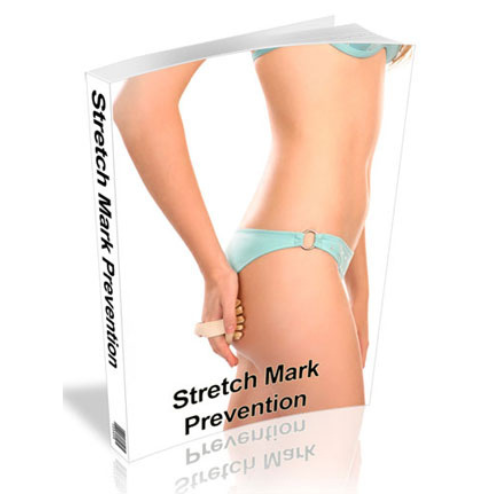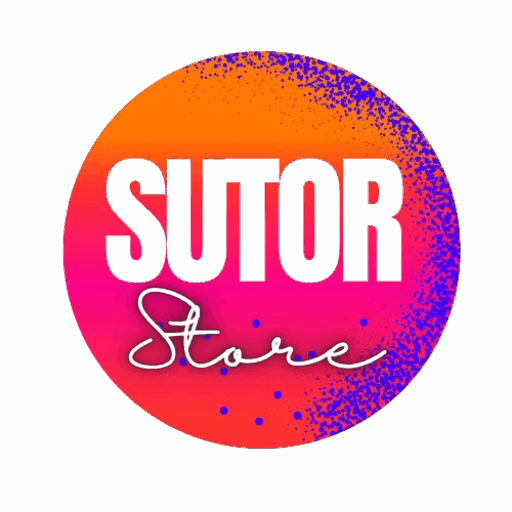Ultimate Guide to Stretch Marks Treatment: Everything You Need to Know
Stretch marks treatment is one of the most searched skincare topics worldwide. Whether caused by pregnancy, weight fluctuations, puberty, or medical conditions, stretch marks—scientifically known as striae—affect millions of people across all genders and ages.
In this comprehensive guide, we’ll explore everything you need to know about treating stretch marks: from the latest medical procedures to home remedies, prevention strategies, and expert advice. If you’re looking for the most effective stretch marks removal methods, you’ve come to the right place.
What Are Stretch Marks?
Stretch marks are a form of scarring on the skin with an off-color hue. They occur when the skin is stretched rapidly, leading to tearing of the dermis, the middle layer of the skin. The body attempts to heal these tears, resulting in visible scar tissue.
Common causes of stretch marks:
- Pregnancy
- Rapid weight gain or loss
- Growth spurts during puberty
- Bodybuilding
- Hormonal changes
- Medical conditions like Cushing’s syndrome
Characteristics of Stretch Marks:
- Color: Fresh stretch marks often appear red, purple, pink, or dark brown, depending on skin tone. Over time, they fade to white or silver.
- Texture: They can feel slightly indented and have a different texture from the surrounding skin.
- Location: Most commonly found on the abdomen, thighs, buttocks, breasts, and arms.
Get to Know 👈👇
https://sutor.store/product/stretch-marks-prevention-and-treatment/

Why Do Stretch Marks Occur?
Stretch marks happen when the skin’s collagen and elastin fibers are stretched beyond their capacity. Collagen provides strength, while elastin gives the skin flexibility. If the skin is stretched too quickly, these fibers break and result in scars.
Risk factors include:
- Genetic predisposition
- Corticosteroid use
- Pregnancy hormones (like relaxin)
- Certain health conditions
Can Stretch Marks Be Completely Removed?
A common question about stretch marks treatment is whether they can be removed completely. The truth is, while treatments can greatly reduce their appearance, making them less noticeable, complete removal is rare.
The goal of treatment is typically:
- Minimize discoloration
- Smooth texture
- Boost collagen production
- Restore skin elasticity
Stretch Marks Treatment Options
1. Topical Treatments
Topical products are often the first line of defense. They are non-invasive, widely available, and affordable.
a. Retinoids
Derived from Vitamin A, retinoids like tretinoin (Retin-A) increase collagen production and skin cell turnover.
Pros:
- Proven efficacy for early-stage (red/pink) stretch marks
- Improves skin texture
Cons:
- Not safe during pregnancy or breastfeeding
- Can cause irritation and peeling
b. Hyaluronic Acid
Hyaluronic acid helps retain moisture and improve skin elasticity. Some studies show it may help reduce early stretch marks.
c. Centella Asiatica
A popular ingredient in K-beauty products, Centella Asiatica promotes collagen production and may prevent stretch marks.
d. Cocoa Butter, Shea Butter, and Oils
While commonly used, there’s limited scientific evidence supporting their effectiveness. However, they can keep skin moisturized, which may help prevent further stretching.
2. Professional Treatments
For more significant or stubborn stretch marks, professional treatments performed by dermatologists offer better results.
a. Laser Therapy
Fractional laser therapy is considered one of the most effective treatments.
How it works:
- Stimulates collagen and elastin production
- Breaks down scar tissue
- Improves skin texture and color
Types of lasers used:
- Fractional CO2 laser
- Pulsed dye laser (PDL)
- Erbium YAG laser
Pros:
- Significant improvement
- Non-invasive
Cons:
- Multiple sessions required
- High cost
- Potential for side effects like hyperpigmentation
b. Microneedling
Also known as collagen induction therapy, microneedling uses fine needles to create micro-injuries in the skin.
Benefits:
- Stimulates collagen and elastin
- Improves skin tone and texture
- Minimal downtime
Combination therapy: Often combined with radiofrequency (RF microneedling) for enhanced results.
c. Chemical Peels
Chemical peels involve applying a solution that exfoliates the skin, promoting new cell growth.
Best for: Mild to moderate stretch marks.
Common acids used:
- Glycolic acid
- Trichloroacetic acid (TCA)
- Salicylic acid
d. Microdermabrasion
A non-invasive exfoliation treatment that removes the outermost layer of dead skin cells.
Pros:
- Painless
- Improves skin texture
Cons:
- Limited effectiveness for deep stretch marks
3. Platelet-Rich Plasma (PRP) Therapy
PRP uses the patient’s own blood plasma, rich in growth factors, to stimulate skin regeneration.
Procedure:
- Blood is drawn and centrifuged
- Plasma is injected or applied with microneedling
Benefits:
- Natural and safe
- Enhances collagen production
- Reduces discoloration and improves texture
4. Radiofrequency Therapy
Radiofrequency (RF) uses controlled heat to stimulate collagen production deep within the dermis.
Pros:
- Non-invasive
- Safe for all skin types
Cons:
- Requires multiple sessions
- Temporary redness or swelling
Natural and Home Remedies for Stretch Marks
While not as effective as professional treatments, some home remedies may help improve skin health and elasticity, potentially reducing the appearance of stretch marks over time.
1. Aloe Vera
Aloe vera has soothing, moisturizing, and healing properties. Applying pure aloe gel may help support skin regeneration.
2. Coconut Oil
Known for its anti-inflammatory properties, coconut oil can keep the skin hydrated and support healing.
3. Vitamin E
Often used in skincare for its antioxidant effects, vitamin E may help improve skin elasticity.
4. Sugar Scrubs
Exfoliating the skin with sugar scrubs can promote circulation and remove dead skin cells, potentially improving stretch mark appearance.
DIY Sugar Scrub Recipe:
- 1 cup sugar
- 1/4 cup coconut oil
- A few drops of lemon juice
Preventing Stretch Marks
While not all stretch marks can be prevented, certain strategies can reduce your risk:
- Maintain a Healthy Weight: Gradual changes in weight prevent rapid skin stretching.
- Stay Hydrated: Well-hydrated skin is more elastic and resistant to damage.
- Use Moisturizers: Creams with hyaluronic acid, shea butter, or oils can improve skin suppleness.
- Eat a Nutrient-Rich Diet: Foods high in vitamins C and E, zinc, and protein support skin health.
- Exercise Regularly: Strengthening muscles and improving circulation promotes healthy skin.
Best Products for Stretch Marks Treatment in 2025
Here are some dermatologist-recommended products known for their efficacy:
- Bio-Oil Skincare Oil: Clinically proven to improve the appearance of scars and stretch marks.
- Mederma Stretch Marks Therapy: Contains botanical ingredients and hyaluronic acid.
- Palmer’s Cocoa Butter Formula: Affordable option for maintaining skin hydration.
- StriVectin SD Advanced: Targets both stretch marks and wrinkles with peptides and niacin.
When to See a Dermatologist
If your stretch marks are causing distress, discomfort, or you’re interested in more intensive treatments, it’s best to consult a dermatologist. They can assess your skin type, the severity of the stretch marks, and recommend appropriate therapies.
Key reasons to seek professional advice:
- Recent, dark, or inflamed stretch marks
- Ineffectiveness of home treatments
- Interest in laser or microneedling treatments
FAQs About Stretch Marks Treatment
Q: Do stretch marks go away on their own?
Stretch marks often fade over time but may not disappear completely. Treatments can accelerate this process and improve their appearance.
Q: Are there any side effects to stretch marks treatments?
Some treatments, like lasers or retinoids, can cause redness, irritation, or hyperpigmentation. Always follow medical advice.
Q: Can men get stretch marks?
Absolutely. Stretch marks are common among men, especially athletes, bodybuilders, and those experiencing rapid weight changes.
Q: Which treatment is best for old stretch marks?
Professional treatments like laser therapy, microneedling, or PRP are more effective for older, white stretch marks.
The Future of Stretch Marks Treatment
Emerging treatments in dermatology show promise in improving stretch marks management:
- Stem Cell Therapy: May accelerate skin healing and regeneration.
- Growth Factors: Bioengineered peptides to stimulate collagen synthesis.
- Advanced Laser Systems: Offering more precision with fewer side effects.
- Nanotechnology: Enhanced delivery of active ingredients in topical products.
Key Takeaways: Stretch Marks Treatment
- Early treatment yields better results: Treat red or purple stretch marks as soon as possible.
- Professional treatments are most effective: Laser therapy, microneedling, and PRP lead the way.
- Consistency is crucial: Even home remedies require regular application over weeks or months.
- Prevention helps: Hydrated, nourished skin is less prone to stretch marks.
Conclusion
Stretch marks are a natural part of life for many people, but that doesn’t mean you have to live with them if you’d prefer not to. From scientifically-backed professional treatments to gentle home remedies, there are numerous options to reduce their appearance.
Choosing the right stretch marks treatment depends on several factors: the age of the marks, skin type, budget, and personal preferences. Consulting a dermatologist can provide guidance tailored to your unique needs.
Remember, your body tells your story — stretch marks are a sign of growth, change, and resilience.
Related Posts:
- Top 10 Mediterranean Diet Recipes for Weight Loss
- Mediterranean Diet vs Keto: Which Is Better for Weight Loss?
- How to Start the Mediterranean Diet: A Beginner’s Guide
- How to Lose Weight Fast?
- Can You Lose Weight on the Mediterranean Diet?
If you found this guide helpful, share it with others! For more expert skincare advice, subscribe to our newsletter.




